Grow a hedge using native Texas plants
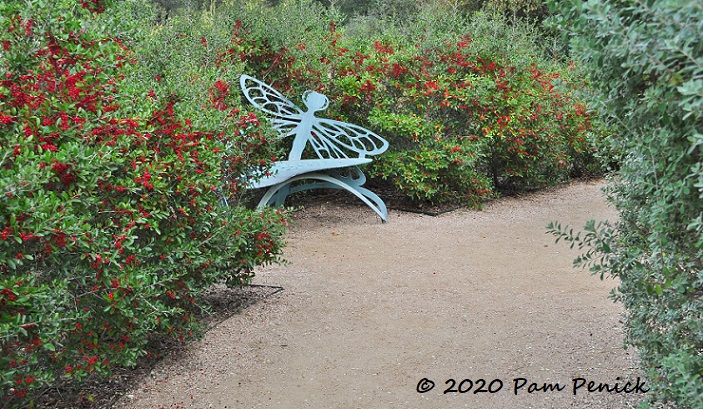
I want to share a little more Wildflower Center inspiration, this time from the maze in the Family Garden. Traditionally mazes are defined by clipped boxwood or yew hedges that grow at least to head-height — about 6 feet tall. Here at Austin’s native-plant botanical garden, the maze is hedged with several different native Texas species or cultivars.
Bright with red berries, yaupon holly (Ilex vomitoria), pictured above, makes a colorful, bushy hedge along an outer path. Since yaupon holly generally grows into an upright, multi-trunked small tree, these must have been pruned over time to create a thicker, more bushy look. I’d love to hear from someone at the Wildflower Center about how they prune them.
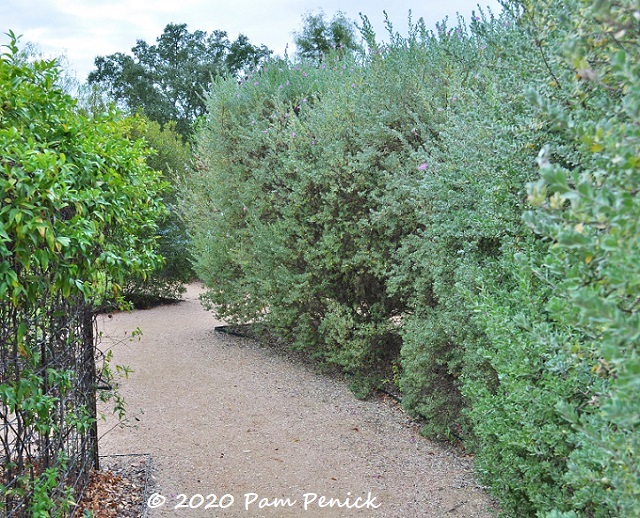
Cenizo (Leucophyllum frutescens) is a straightforward choice for a sunny, dry location. The standard species can be airy, especially at the lower branches, so I’d guess this is a bushier cultivar. You can see it’s been pruned to create a hedge, although not severely sheared. The solid effect is well done.
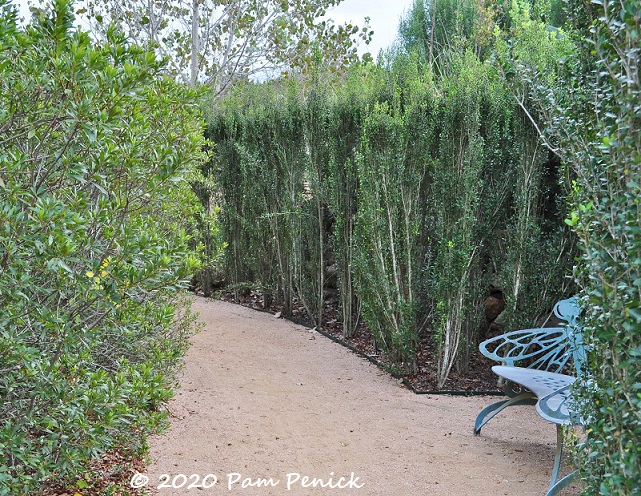
A more unusual but effective choice is ‘Will Fleming’ yaupon holly, a fastigiate, non-berrying cultivar of the native yaupon holly. Because its form is columnar, plants must be closely spaced to create a solid screen. ‘Will Fleming’ also tends to flop, so regular trimming or tying is required.
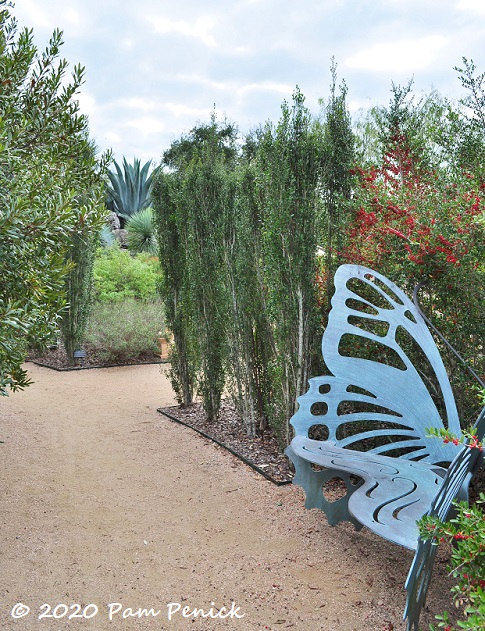
Here’s another section of the ‘Will Fleming’ yaupon hedge, transitioning to red-berried yaupon holly behind a butterfly bench. Across the path you can see a bit of a Southern wax myrtle (Morella cerifera) hedge. Native to East Texas, Southern wax myrtle tends to be thirsty here in Austin. But for moist low areas or rain gardens it might make a good choice.
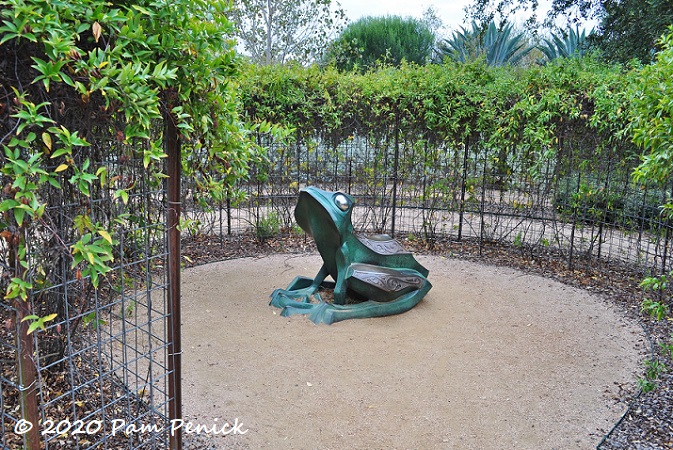
In the center of the maze, where a frog sculpture greets successful maze runners, there’s a surprising choice for the inner hedge: a vine! Carolina jessamine (Gelsemium sempervirens) clambers up a curved wire trellis to make an evergreen screen mostly along the top; the lower half is leggy and see-through, as vines typically grow, and not effective at fully screening the space. But a vine trellis is a creative way to make a “hedge,” and Carolina jessamine offers bright-yellow color and sweet fragrance in early spring when it flowers.
What other native plants make good hedges, either here in central Texas or wherever you live?
__________________________
Digging Deeper
Come learn about gardening and design at Garden Spark! I organize in-person talks by inspiring designers, landscape architects, authors, and gardeners a few times a year in Austin. These are limited-attendance events that sell out quickly, so join the Garden Spark email list to be notified in advance; simply click this link and ask to be added. Season 8 kicks off in fall 2024. Stay tuned for more info!
All material © 2025 by Pam Penick for Digging. Unauthorized reproduction prohibited.


That first photo threw me – I thought it was salvia greggii, or autumn sage, at first. I too am curious about how they prune those yaupons! Being a gardener that rarely (ok, never) makes time for trimming hedges, I tend to go with a more natural look myself, but I love it. I’ve used mounatin laurels, yaupon, cherry laurel and evergreen sumac to screen neighboring houses over the years, so I guess that counts as a hedge, albeit very informal and open near the bottom, which leaves space for shrubbier evergreen perennials and grasses.
Thanks for taking us on the Wildflower Center tour!
Like you, I’ve used small native trees for natural-looking screens too. And vines, but they don’t always behave the way I want.
I’m experimenting with native shrubs as a hedge myself, to reduce water use and to provide bird habitat/food. California has some excellent candidates–Heteromeles arbutifolia, Rhus ovata and Rhus integrifolia, Garrya, Carpenteria, Ceanothus, even the native oak Q. agrifolia can make a tall hedge regularly sheared. Since in nature it is browsed by deer when young, it takes nipping back quite well.
The Cenizo does very well here, too. Beautiful shrub.
Thanks for sharing about your native hedging, HB. I’m fascinated by the idea of hedging an oak! I remember when landscape architect James David (formerly of Austin, now relocated to Santa Fe) once told me that he was making an oak topiary, which just goes to show that many kinds of plants are more amenable to shaping than we might think.
Oh, wow! It really has grown in since I was there last– I didn’t recognize the area til you showed the frog sculpture!
It really has. It took a few years to get going, but now the maze has sturdy plant walls.
A lot of inspiration here.
Always.
Juniperus virginiana, although I think they are much prettier when allowed to stretch out.
And any of the leucothoes. I think they can be clipped but probably not a pretty sight.
Bunch grasses like Panicum would make an interesting hedge.
Oh, maize? Lol.
A temporary one, of course, along with the grasses, but classic for a pumpkin patch, yes?